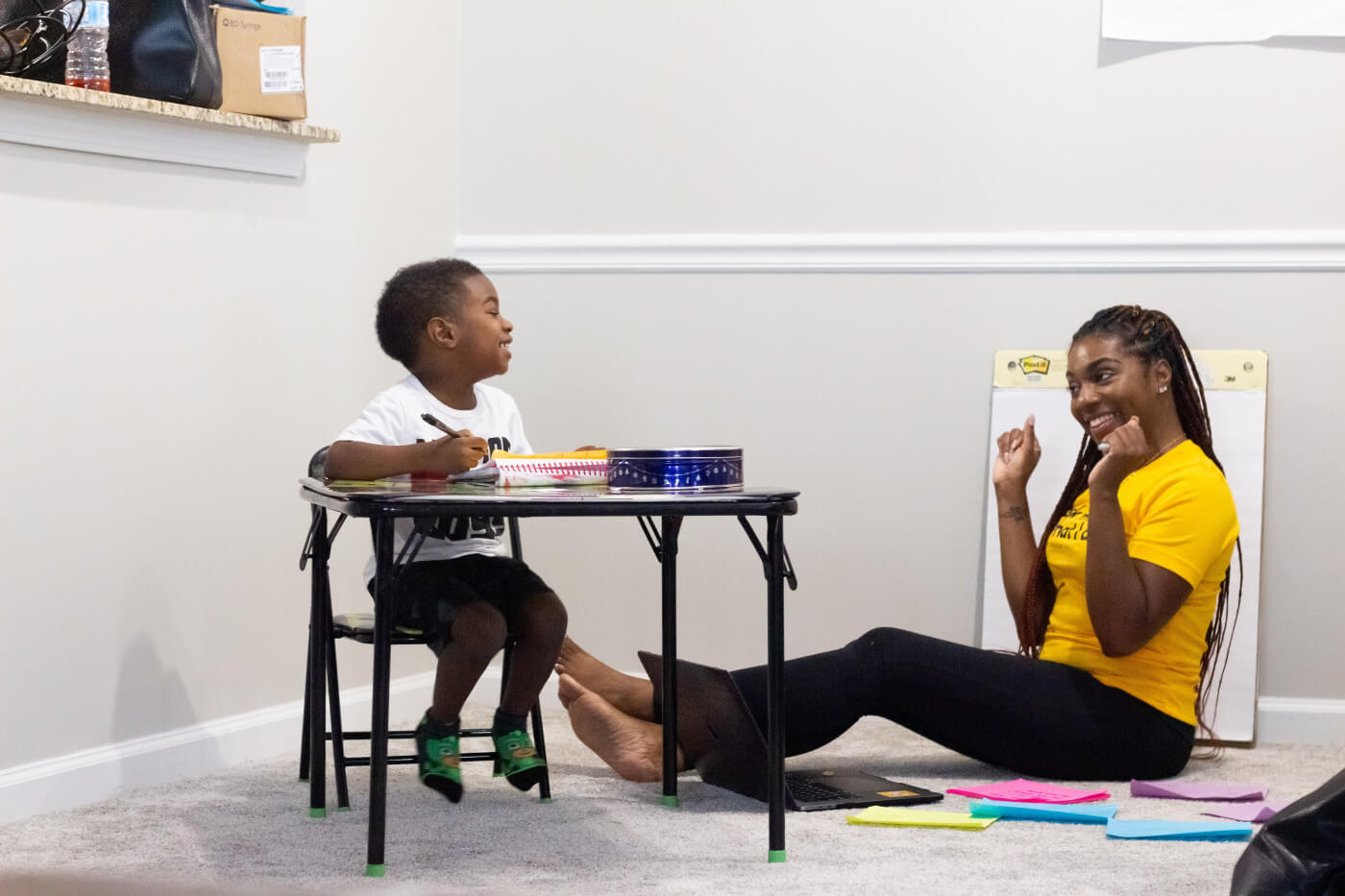How To Get Your Child To Love Maths (Even If You Don’t)

Many of us grew up despising maths and absolutely dreading doing any type of numbers-related problem solving. It is easy to pass along negative feelings about maths to your child if you have negative feelings about it yourself. But believe it or not, it’s possible to help them develop a love for all things numbers! If you are looking for simple and practical ways to get your child to love maths (even if you don’t), then keep on reading.
Don’t talk about your negative experience with maths
Your child doesn’t need to know that you scored poorly in high school maths. In fact, unless somebody tells them, they won’t know that a person can be a “maths person” or not. As soon as you admit that you aren’t good at maths, you are putting the idea into your child’s mind that there are people who are good with numbers and people who aren’t. Your child may then start to believe that they are also inherently bad at maths.
The reality is that there is no such thing as a maths person. Rather, there are people who put lots of effort into maths and they excel because of it! Anybody who has previously performed poorly in maths tasks and examinations can master it and love it, with enough perseverance and effort.
Demonstrate a positive attitude
With the above point in mind, set the tone for maths conversations as positive ones and model this mindset (this form of nurturing is important). When your child approaches you with a difficult maths problem, you may start to feel your stress levels rise. Your challenge will be to model the persistent enjoyment of maths, even if it doesn’t come naturally. Try not to view maths as a frustration, but rather as a fascinating puzzle that is waiting to be solved. If you can remain calm and positive that there is a solution, you can pass on that positive approach to your child.
Make maths relevant
Your child will start to develop a love for numbers if they can understand their relevance. Maths is often first taught in a systematic way, which works for some learners but not for all. Show your child how mathematical concepts can be applied to real-life situations.
Here’s an example: derivatives (ways of calculating rates of change) can help us measure slopes. We see slopes in everyday life. Just consider the skate park or a big hill you cycle up!
Read this: How To Help Your Child Solve Word Problems
Focus on sense and logic
Things like “carrying over” will help to get the job done, but they won’t help your child understand the logic behind it. In addition, there is no benefit in thinking that there is only one way to solve a problem.
For example, you are presented with this maths problem: 17 + 25
A maths trick may urge you to add the 7 and 5 and then carry the 1. It’s a great trick but there’s no logic behind it.
Let’s use number sense to solve the problem: You could round up to the nearest 10s, take 3 from 25 and add it to 17. Now you are adding 20 + 22, which seems much easier.
The correct answer is 42.
As you can see, there are multiple ways to arrive at the correct answer, providing more opportunities for creative problem-solving!
Teach them tricks
Who doesn’t love maths tricks? Many of us will remember the earth-shattering moment when we discovered the magic of the 9 times table and using our fingers to work out maths problems! Recreate this moment with your child and teach them mind-blowing maths tricks (if you don’t know any or would like a refresher, check this out).
Play maths games
All children love to play games! If you are able to turn maths into an interactive experience, you will see their love for maths come alive.
Here are two ideas to try:
- Dice War - each player rolls a die. The player with the highest number gets a point. This game will allow your child to practice subitising and addition at the same time! And if you’re tallying marks to keep track of the score, they can practice one more maths skill while having fun. You can make the game more complex by adding in more dice as your child gains confidence.
- I Spy - using a regular deck of cards, remove all the picture cards (there will be 40 cards remaining). Place the cards face up in a 10 x 4 or 8 x 5 grid. Player One will begin by saying “I spy with my little eye, two cards that add up to X”. Player Two will then search for two cards that add up to that number. The cards need to be next to one another, horizontally or vertically. Player Two will pick up any other cards that add up to that number too. If Player Two misses any combinations, Player One can claim those cards. The winner is the player who has the most pairs of cards once the grid has been cleared.
Use food
Bring maths into the kitchen and begin adding, subtracting, multiplying, dividing, measuring, and graphing your child’s favourite foods. You can demonstrate fractions with pizza (yum!) or use grapes and other fruits for adding and subtracting. Baking is a brilliant medium for measuring, ratios, and timekeeping.
Introduce them to someone who loves maths
If you’re really stuck, consider enlisting the help of a maths-loving tutor! Being around somebody with an innate love for numbers and an ability to teach could be a game changer for your child. At Teach Me 2, we pair families with their perfect tutor. So, if you’re looking for a tutor with an ability to bring understanding to complex maths problems, then click here to get started.
We have online Maths tutors available as well as tutors in Johannesburg, tutors in Pretoria, tutors in Durban, and tutors in Cape Town.
Related Articles

Easy Ways To Improve Your Child’s Attention Span
If you’ve noticed that your child is having a difficult time focusing and is easily distracted, it could be time to change up their routine by introducing new behavioural and learning strategies.
Read More

Mind-Blowing Maths Tricks Your Kids Will Love
If your child is struggling to grasp numbers, show them these mind-blowing Maths tricks. We guarantee this will revolutionise the way they view Maths. (read more)
Read More

How to Help Your Child Solve Word Problems
On the best of days, Maths can feel daunting! Solving a Maths equation when all the numbers are given to you can be anxiety-inducing enough, but with word
Read More

We help families find their perfect tutor
Help your child improve their grades and get their confidence back.
GET A TUTOR